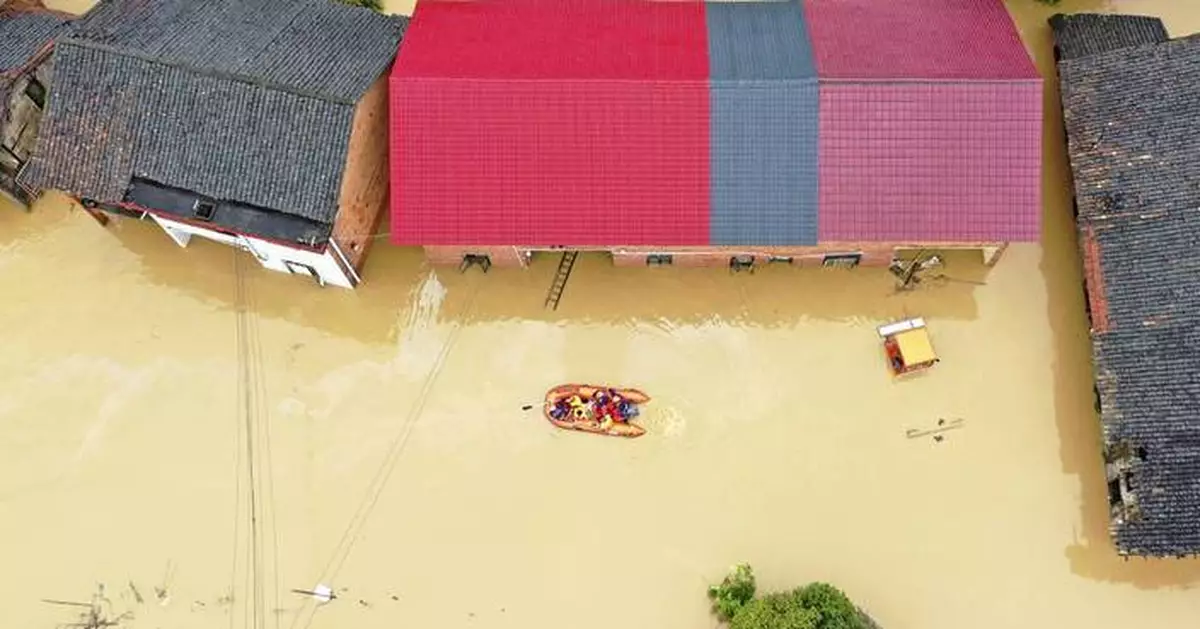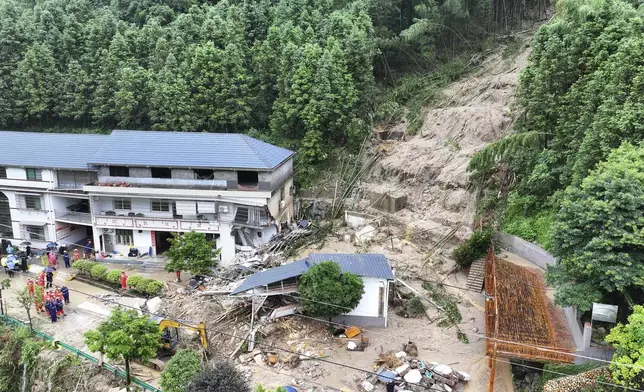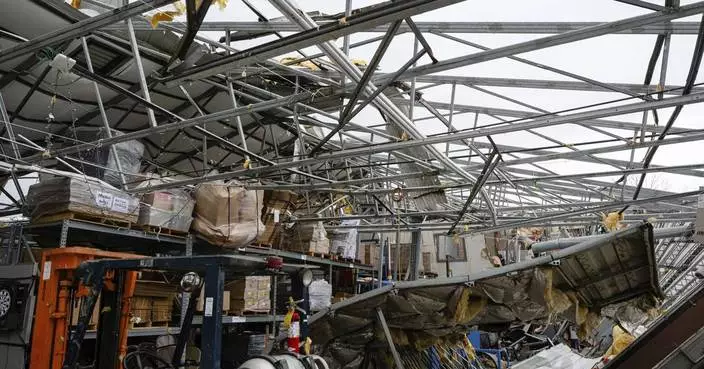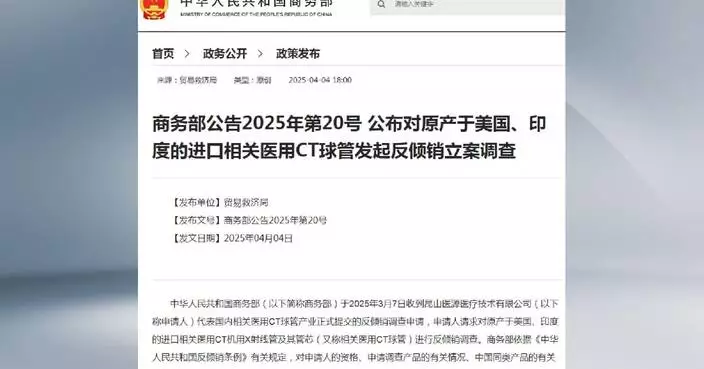In India and China, torrential rains have killed more than 250 people in the past week. Three others died in Pakistan. Widespread flooding has been reported in North Korea near the border with China with no word on whether anyone died.
This time of year is monsoon and typhoon season in Asia, and climate change has intensified such storms. Heavy rains have triggered landslides and flooding, devastating crops, destroying homes and taking lives.
Click to Gallery
FILE - Motorcyclists and cars drive through a flooded road caused by heavy monsoon rainfall in Karachi, Pakistan, on July 30, 2024. (AP Photo/Fareed Khan, File)
FILE - This undated photo provided on July 29, 2024 by the North Korean government, shows a flood-hit area in North Phyongan province, North Korea. Independent journalists were not given access to cover the event depicted in this image distributed by the North Korean government. The content of this image is as provided and cannot be independently verified. Korean language watermark on image as provided by source reads: "KCNA" which is the abbreviation for Korean Central News Agency. (Korean Central News Agency/Korea News Service via AP, File)
FILE - This undated photo provided on July 31, 2024 by the North Korean government, shows a flood-hit area in Sinuiju city, North Phyongan province, North Korea. Independent journalists were not given access to cover the event depicted in this image distributed by the North Korean government. The content of this image is as provided and cannot be independently verified. Korean language watermark on image as provided by source reads: "KCNA" which is the abbreviation for Korean Central News Agency. (Korean Central News Agency/Korea News Service via AP, File)
FILE - Rescuers search through mud and debris for a third day after landslides set off by torrential rains in Wayanad district, Kerala state, India, on Aug. 1, 2024. (AP Photo/Rafiq Maqbool, File)
FILE - Children push their father's scooter through a flooded street as it rains in Mumbai, India, on July 25, 2024. (AP Photo/Rafiq Maqbool, File)
FILE - In this drone photo released by Xinhua News Agency, a landslide destroys a house in Yuelin village of Shouyue town of Hengyang city, central China's Hunan Province on July 28, 2024. (Chen Zhenhai/Xinhua via AP, File)
FILE - Rescuers use a dinghy boat to evacuate villagers trapped by floodwaters in Jingtang village, Zixing city, in southern China's Hunan province, on July 28, 2024. (Chinatopix via AP, File)
Historical data shows that China is having more extremely hot days and more frequent intense rains, according to a report released last month by the China Meteorological Administration, which forecasts more of both in the coming 30 years.
Governments have launched disaster prevention plans to try to mitigate the damage. Rescue teams scramble to evacuate people ahead of approaching storms and deliver relief goods by helicopter to cut-off areas. China has deployed drones for emergency communication in rain-prone provinces.
Sometimes it isn't enough, as the tragic consequences playing out in Asia show.
Heavy rains sent torrents of mud and water through tea estates and villages in Kerala state in southern India early Tuesday, destroying bridges and flattening houses.
Hope of finding survivors has waned as the search entered its fourth day. Bodies have been found as many as 30 kilometers (20 miles) downriver from the main landslides.
The area is known for its picturesque tea and cardamom estates, with hundreds of plantation workers living in nearby temporary shelters. “This was a very beautiful place," a shopkeeper said. “I used to visit here many times. ... Now there is nothing left.”
India regularly has severe floods during the monsoon season, which runs between June and September and brings rain that is crucial for crops.
Typhoon Gaemi was blamed for more than 30 deaths in the Philippines and 10 in Taiwan as it churned through the western Pacific last week, but it was still fatal after weakening to a tropical storm in China.
Rain drenched parts of inland Hunan province for several days. On Sunday morning, a mudslide slammed into a homestay house in a popular weekend spot, killing 15 people.
Elsewhere in Hunan, the bodies of three people were found on Monday, believed to be victims of another landslide. And authorities in nearby Zixing city announced Thursday that 30 people had died in floods, with 35 others missing.
One other death in China was apparently tied to the storm, a delivery driver on a scooter struck by falling tree branches during high winds in Shanghai.
China has recorded 25 major floods this year, the most since it began keeping statistics in 1998, the Ministry of Water Resources said this week.
The tropical storm also generated heavy rain in northeast China on the border with North Korea, overflowing the Yalu River, which divides the two countries.
In North Korea, the rain flooded 4,100 houses, 3,000 hectares (7,400 acres) of farmland and many public buildings, roads and railways.
Its state media did not give information on deaths, though the nation's leader Kim Jong Un implied there were casualties when he was quoted blaming public officials who had neglected disaster prevention, causing "the casualty that cannot be allowed.”
Military helicopters and navy and other government boats evacuated stranded residents. State TV aired footage showing Kim and other officials riding on rubber boats to examine the scale of the damage. The footage showed houses submerged in muddy waters with only their roofs visible.
On the Chinese side, state television showed excavators in rushing water trying to clear debris after a mudslide in Jilin province. One city near North Korea asked people living below the third floor to move higher as the Yalu River rose.
In Dandong, a large Chinese city along the river, rescuers evacuated residents in rubber dinghies on streets turned into virtual lakes. There were no reports of deaths.
Record rainfall in the city of Lahore flooded streets and left at least three people dead in Pakistan on Thursday. The deaths at the start of August came on top of 99 rain-related fatalities the previous month.
Some parts of Lahore recorded 353 millimeters (14 inches) of rain in a few hours, breaking a 44-year-old record. The rain was so heavy that it entered some hospital wards in the capital of Punjab province.
The victims included two children, one who drowned in a flooded street and another who fell from the roof of her house.
The spelling of Zixing city has been corrected in this story.
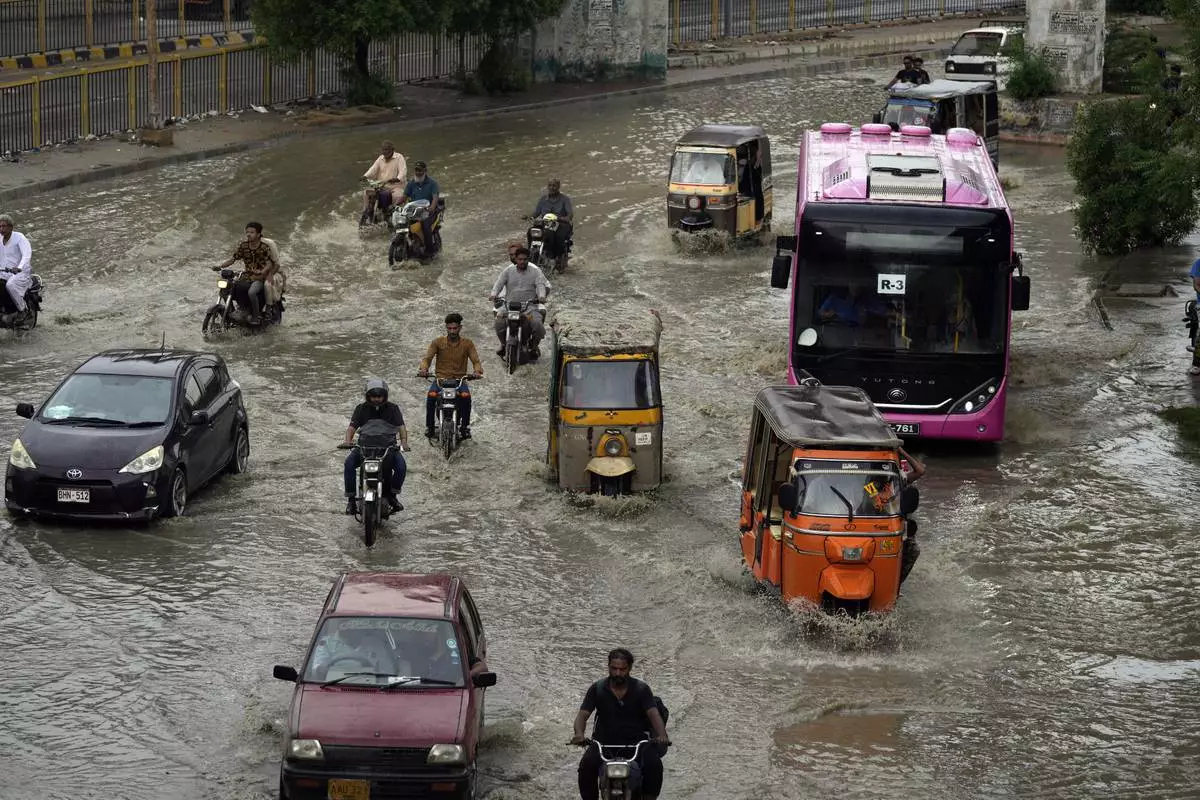
FILE - Motorcyclists and cars drive through a flooded road caused by heavy monsoon rainfall in Karachi, Pakistan, on July 30, 2024. (AP Photo/Fareed Khan, File)
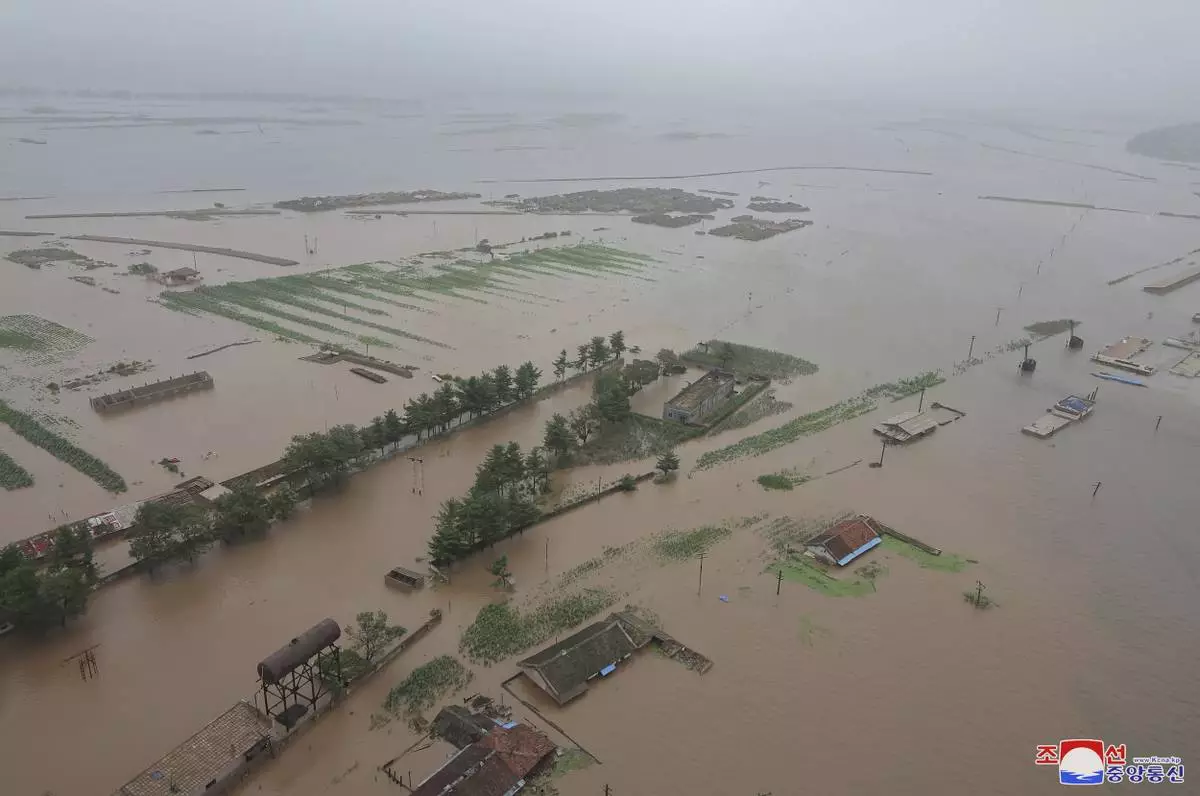
FILE - This undated photo provided on July 29, 2024 by the North Korean government, shows a flood-hit area in North Phyongan province, North Korea. Independent journalists were not given access to cover the event depicted in this image distributed by the North Korean government. The content of this image is as provided and cannot be independently verified. Korean language watermark on image as provided by source reads: "KCNA" which is the abbreviation for Korean Central News Agency. (Korean Central News Agency/Korea News Service via AP, File)
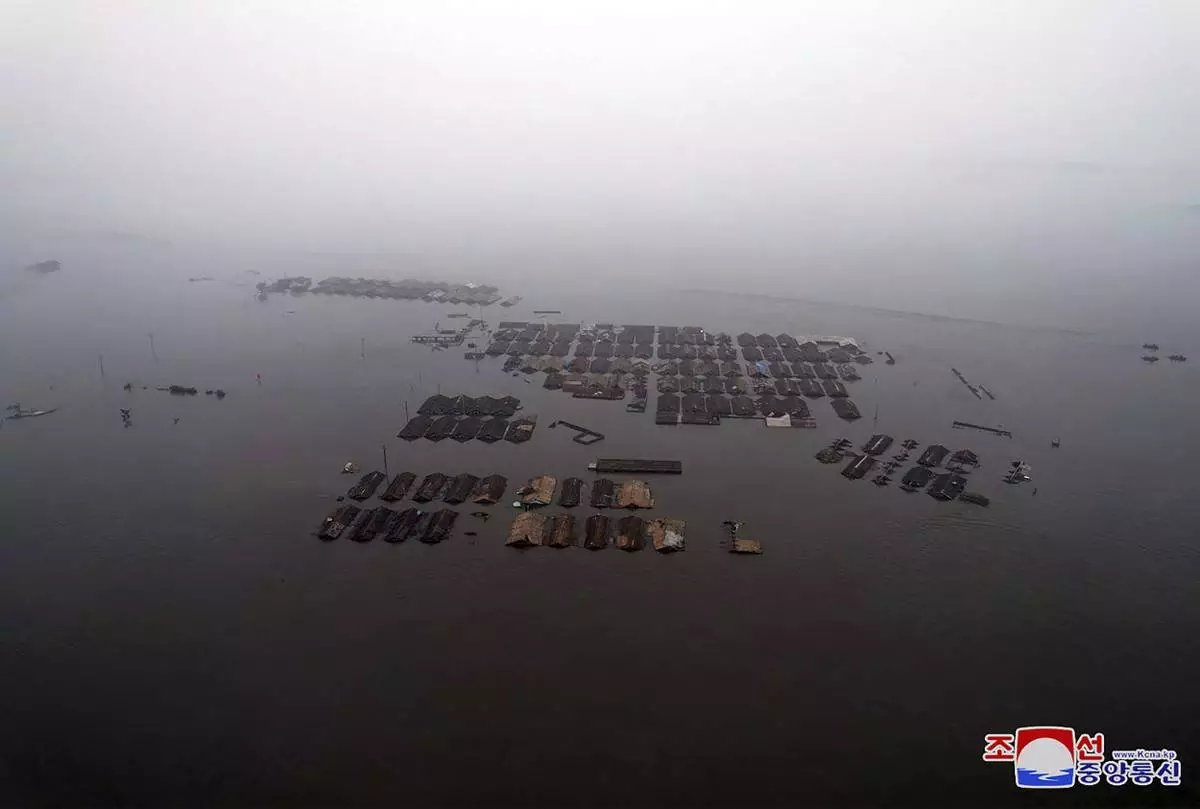
FILE - This undated photo provided on July 31, 2024 by the North Korean government, shows a flood-hit area in Sinuiju city, North Phyongan province, North Korea. Independent journalists were not given access to cover the event depicted in this image distributed by the North Korean government. The content of this image is as provided and cannot be independently verified. Korean language watermark on image as provided by source reads: "KCNA" which is the abbreviation for Korean Central News Agency. (Korean Central News Agency/Korea News Service via AP, File)
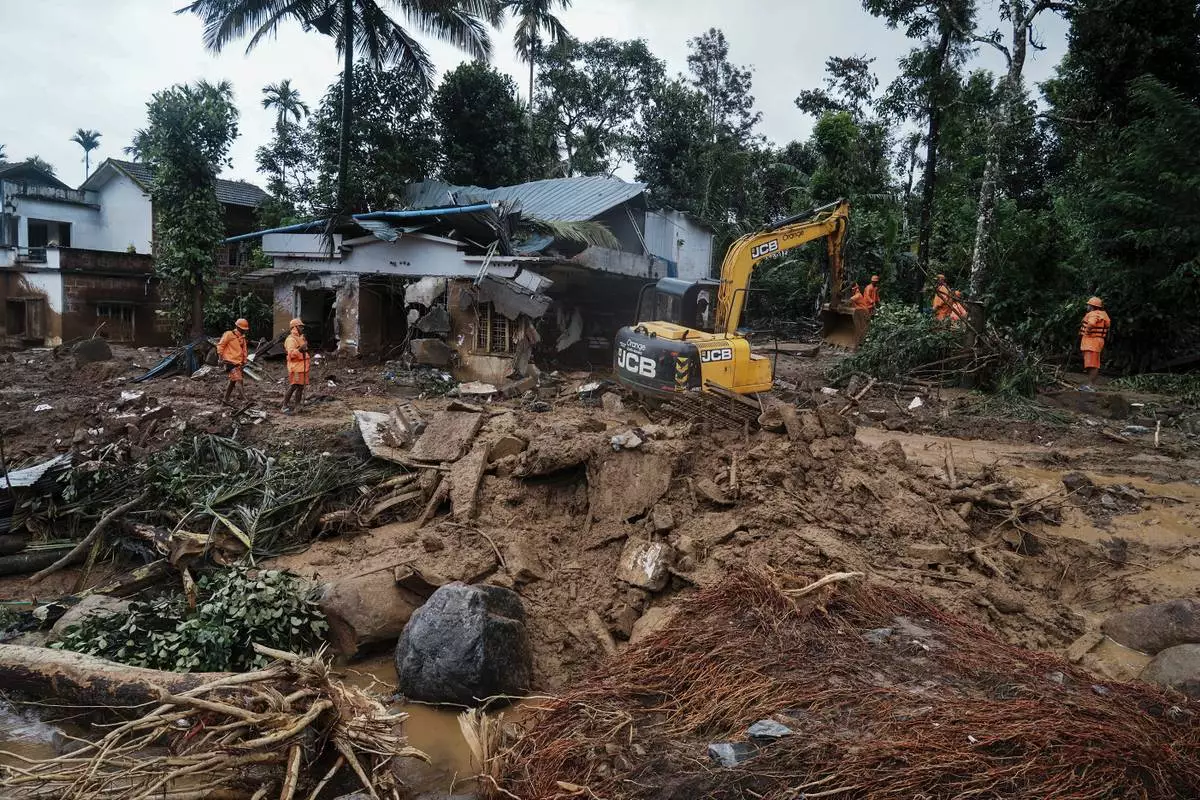
FILE - Rescuers search through mud and debris for a third day after landslides set off by torrential rains in Wayanad district, Kerala state, India, on Aug. 1, 2024. (AP Photo/Rafiq Maqbool, File)
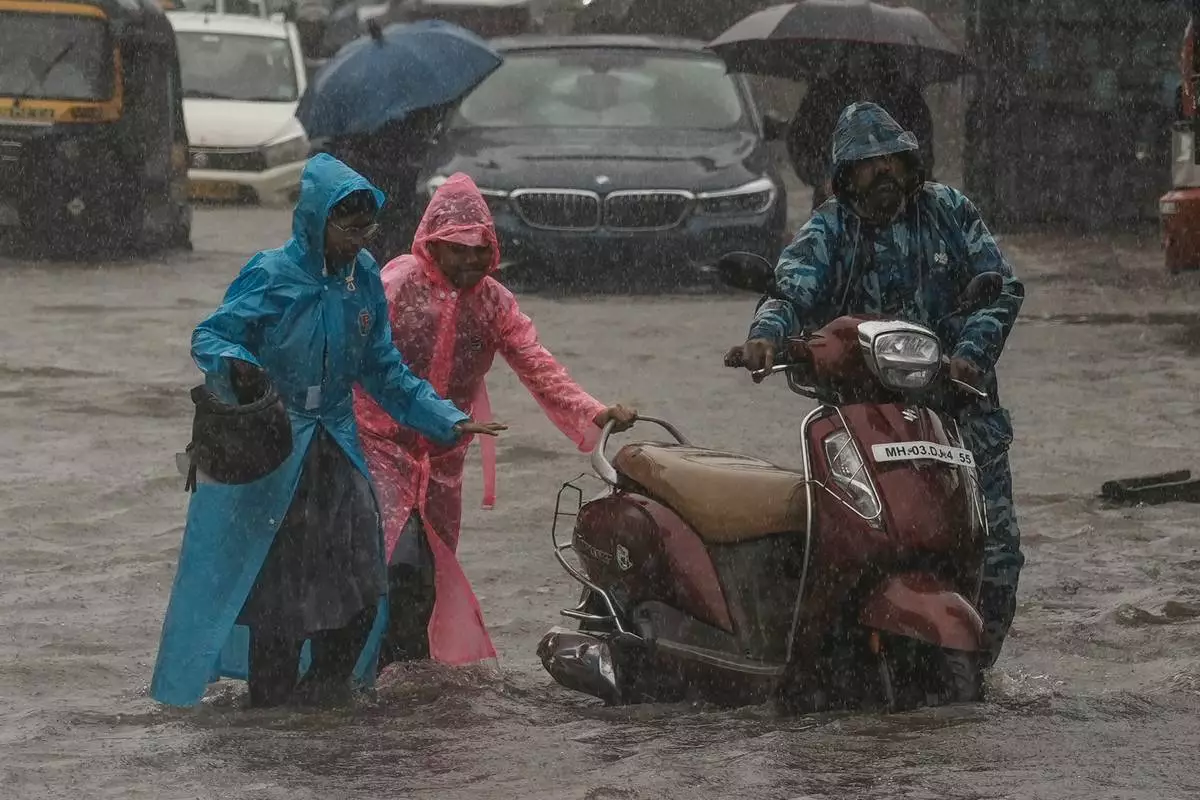
FILE - Children push their father's scooter through a flooded street as it rains in Mumbai, India, on July 25, 2024. (AP Photo/Rafiq Maqbool, File)

FILE - In this drone photo released by Xinhua News Agency, a landslide destroys a house in Yuelin village of Shouyue town of Hengyang city, central China's Hunan Province on July 28, 2024. (Chen Zhenhai/Xinhua via AP, File)
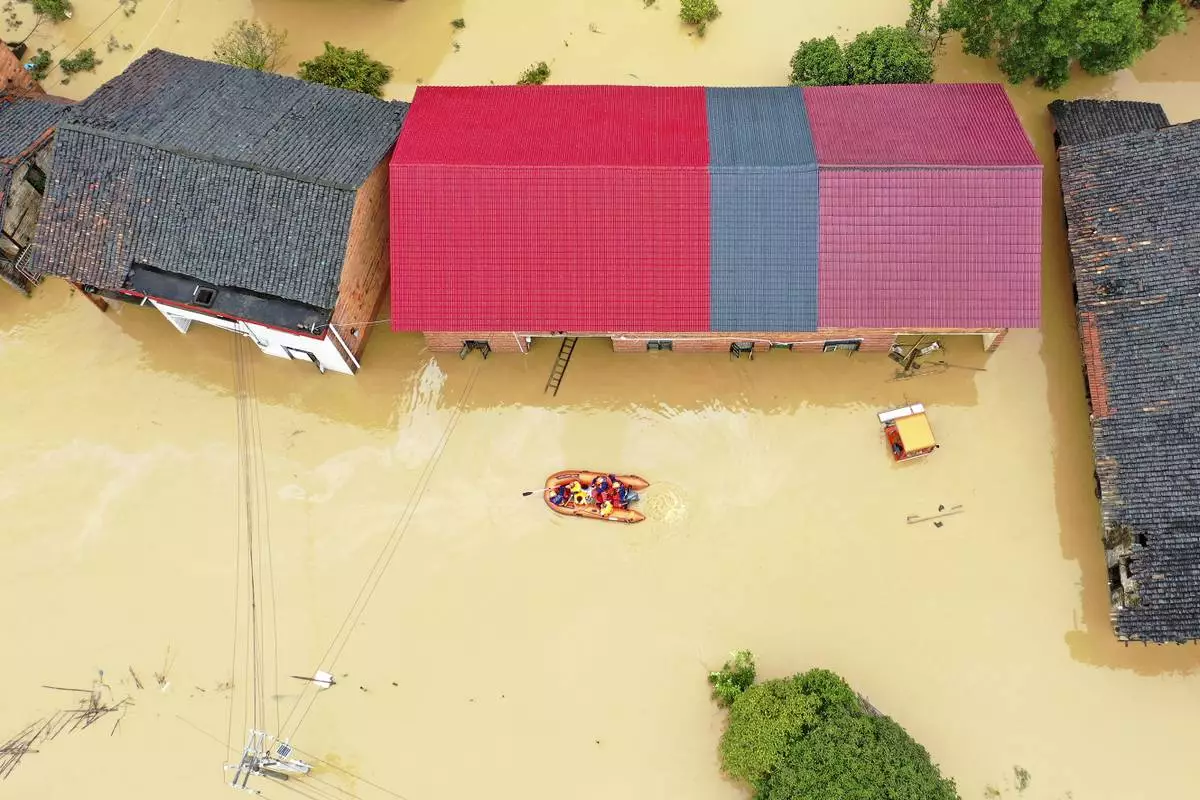
FILE - Rescuers use a dinghy boat to evacuate villagers trapped by floodwaters in Jingtang village, Zixing city, in southern China's Hunan province, on July 28, 2024. (Chinatopix via AP, File)
Alex Ovechkin of the Washington Capitals has tied the NHL goals record of 894 held by Wayne Gretzky.
Ovechkin scored twice on home ice Friday night and needs one more to take sole possession of the record.
Ovechkin entered the season 42 short of breaking the regular-season record by “The Great One” that had long seemed unapproachable. The 39-year-old Russian is in his 20th NHL season and was on pace to get to 895 in February before breaking his left leg in a shin-on-shin collision in November. He missed 16 games but resumed his pursuit at Toronto in the Capitals' first game out of the Christmas break.
Ovechkin scored four minutes into the Capitals' game Friday night against Chicago to get his 893rd. Then, on a power play in the third period, he took a pass from John Carlson and fired from his trademark spot in the left faceoff circle past Spencer Knight to match Gretzky.
Ovechkin already owns the NHL records for power-play goals and shots on goal.
No. 894 also gave him 136 game-winning goals, breaking a tie for the most with Jaromir Jagr. Ovechkin has scored on 182 goaltenders, breaking Jagr's record by beating Leevi Merilainen of the Senators with No. 874. Ovechkin has 178 multi-goal games, second to Gretzky (189).
Ovechkin earlier this season became the 60th player to record 700 assists. He joined Gretzky, Gordie Howe, Jagr, Marcel Dionne and Phil Esposito as the only players with 700 goals and 700 assists.
Ovechkin, after climbing past Mike Gartner (708), Esposito (717), Dionne (731), Brett Hull (741) and Jagr (766), scored goal No. 802 on Dec. 23, 2022, to move into second behind Gretzky (894).
Gretzky has held the record since scoring his 802nd goal on March 23, 1994, to pass Howe. He added 92 more before retiring in 1999 after a total of 1,487 games over 20 seasons.
Gretzky holds 55 NHL records and even if his goals mark falls to Ovechkin — which he has said he is excited about — two seem truly untouchable: 2,857 total points and 1,963 assists, which is more than anyone else has in goals and assists combined.
For NHL playoff goals, which do not count toward the record, Gretzky has the most (122). Ovechkin has 72. Gretzky also had another 56 in the World Hockey Association regular season and playoffs, while Ovechkin has 57 from his time in the Russia-based KHL.
AP NHL: https://apnews.com/hub/nhl

Washington Capitals left wing Alex Ovechkin (8) celebrating his 894th career goal with fans during the third period of an NHL hockey game against the Chicago Blackhawks, Friday, April 4, 2025, in Washington. (AP Photo/Nick Wass)

Washington Capitals left wing Alex Ovechkin (8) celebrating his 894th goal during the third period of an NHL hockey game against the Chicago Blackhawks, Friday, April 4, 2025, in Washington. (AP Photo/Nick Wass)

Washington Capitals left wing Alex Ovechkin (8) reacts after scoring a goal during the first period of an NHL hockey game against the Boston Bruins, Tuesday, April 1, 2025, in Boston. (AP Photo/Mark Stockwell)

Washington Capitals' Alex Ovechkin (8) celebrates a goal against the Carolina Hurricanes during the second period of an NHL hockey game in Raleigh, N.C., Wednesday, April 2, 2025. (AP Photo/Karl DeBlaker)

Washington Capitals' Alex Ovechkin (8) passes the puck past Winnipeg Jets' Colin Miller (6) during the first period of an NHL hockey game in Winnipeg, Manitoba, Tuesday, March 25, 2025. (Fred Greenslade/The Canadian Press via AP)

Washington Capitals' Alex Ovechkin (8) takes a shot on Winnipeg Jets goaltender Connor Hellebuyck (37) during the second period of their NHL hockey game in Winnipeg, Manitoba, Tuesday, March 25, 2025. (Fred Greenslade/The Canadian Press via AP)

Washington Capitals left wing Alex Ovechkin (8) and Florida Panthers defenseman Nate Schmidt (88) battle for position during the third period of an NHL hockey game, Saturday, March 22, 2025, in Washington. (AP Photo/Nick Wass)

Washington Capitals left wing Alex Ovechkin (8) celebrates his goal during the first period of an NHL hockey game against the Philadelphia Flyers, Thursday, March 20, 2025, in Washington. (AP Photo/Nick Wass)

Washington Capitals left wing Alex Ovechkin warms up before an NHL hockey game against the Florida Panthers, Saturday, March 22, 2025, in Washington. (AP Photo/Nick Wass)

Washington Capitals left wing Alex Ovechkin takes to the ice to warm up before an NHL hockey game against the Florida Panthers, Saturday, March 22, 2025, in Washington. (AP Photo/Nick Wass)

Washington Capitals left wing Alex Ovechkin (8) celebrates his goal during the first period of an NHL hockey game against the Philadelphia Flyers, Thursday, March 20, 2025, in Washington. (AP Photo/Nick Wass)









